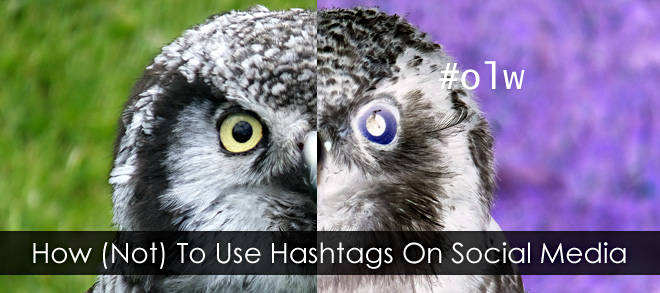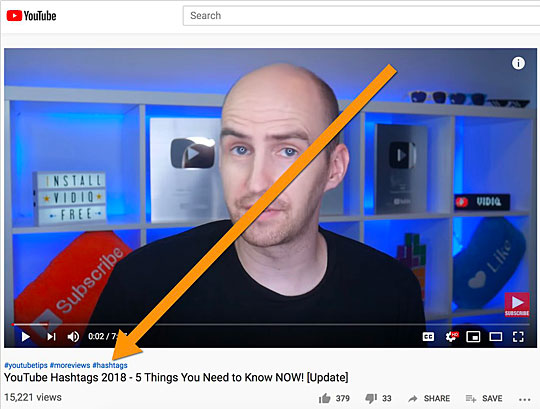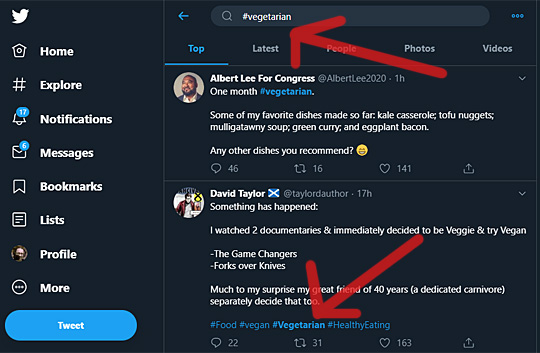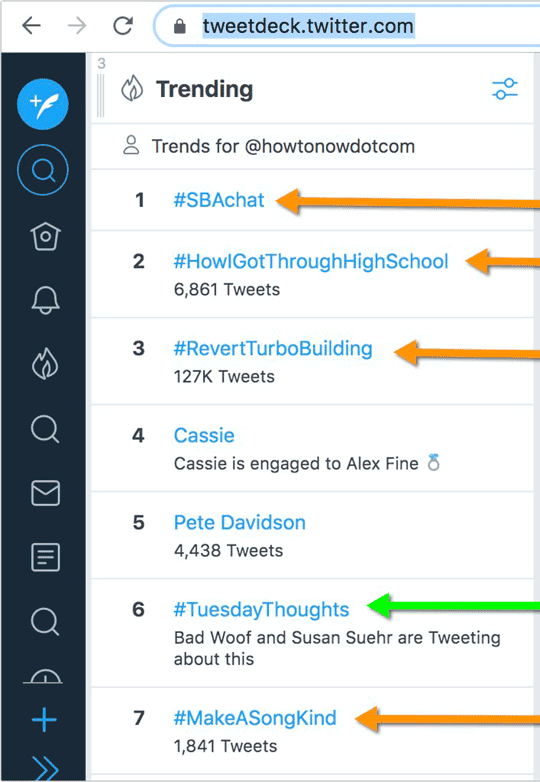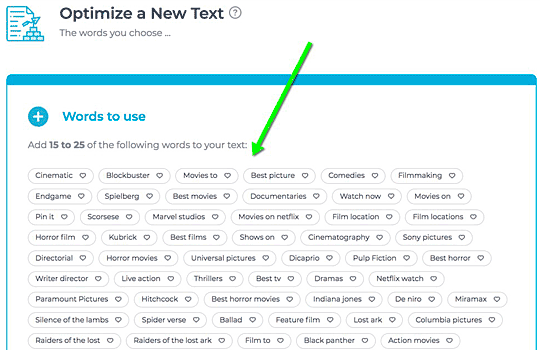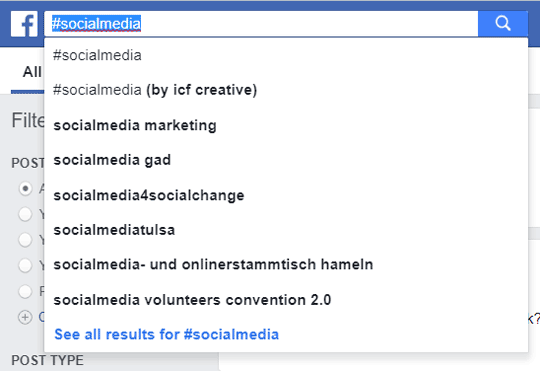Hashtags are the most exciting phenomenon of our century, at least in my opinion.
From Twitter chats and social media contests to news monitoring, hashtags make the web alive with all the various ways you can use them to grow your audience and engage your community.
But for all the multiple ways businesses can boost their marketing efforts with hashtag, marketers have been remarkably careless with using them.
Even these days, years after hashtag revolution has happened, many people still don’t seem to understand how they work. As a result, hashtags are often being misused.
But first, let’s see which major platforms support hashtags these days and how:
- Twitter: No limit to the number of hashtags you can use apart from the general limit of characters you can fit in within one tweet (i.e. 280 characters). Twitter was the earliest adopter of hashtags, and this platform is actually responsible for the hashtag revolution.
- Instagram: You can use maximum of 30 hashtags per update. Instagram took hashtags to a new level. That’s the platform we need to think for hashtags becoming a style of life and a way to add humor to any update. Due to Instagram, hashtags have become #MoreThanWords. Furthermore, on Instagram hashtags are key to your visibility.
- Facebook: While Facebook owns Instagram, the platform didn’t quite get hashtags. They are supported on the platform, yet in a somewhat limited way.
- YouTube: One of the recent adopters of hashtags, YouTube links them right in the video title. You can use a maximum of 15 hashtags per video.
Tumblr should also be mentioned here as well. While their tagging algorithm does not include the hash symbol, it works pretty much the same.
Here are a few common ways web users abuse hashtags, and what they should be doing instead.
Make Hashtags Natural Part Of Your Update
- The Bad: Using a bunch of hashtags in every single social media update in order to attract the attention of anyone who might possibly be able to benefit from it.
- The Good: When it comes to Twitter, it might seem like a good idea to stuff an update full of every possible relevant hashtag. But this takes up your precious character limit and looks tacky. Instead, use one or two hashtags in a tweet, and if possible try and hashtag a word in the tweet itself. For example, you could write “I found the best #vegetarian pizza recipe ever!” Now you don’t have to add #vegetarian to the end of the tweet.
Hashtags Should Make Sense
- The Bad: Using random hashtags that may or may not be important in the tweet itself, just because it is slightly related.
- The Good: Getting over zealous with your hashtagging is easy to do. I have seen people hashtag every single word in an update, just so they came up on a search for every one. This is ridiculous… a hashtag should only be the subject, genre or emotion behind a post. So saying “I #found the #best #vegetarian #pizza #recipe ever!” is not at all what you should be going for. Plus, hashtags are clickable, so they will steal clicks from your own URL, so limit it to 1-2 hashtags, especially on Twitter
Don’t Ever Hijack Trending Hashtags
Hijacking hashtags means taking a currently trending hashtags and adding it to your update without actually talking on the topic.
- The Bad: Hashtag hijackers will take random hashtags that have gained popularity or are trending and use them to piggy back for views. Their update has nothing to do with the hashtag itself, and it causes problems for the original person who penned a specific keyword.
- The Good: Feel free to use a hashtag that has gained popularity, but only when you add value to the context! Be aware of the purpose to the tag, and don’t swipe it in a desperate attempt to become visible. It makes you look like a spammer, and it is bad social media etiquette.
TIP – For trending hashtag monitoring I use Tweetdeck that allows to add a new column to monitor currently trending hashtags right inside your dashboard:
It’s also a good idea to use an editorial calendar (here are few plugins to build one!) to plan out some recurring hashtag marketing (like big and small holidays and days-of-the-week hashtags).
Hashtags Should Have A Purpose
- The Bad: Flooding your Twitter feed with updates using the hashtag, even if you are continuously tweeting about it.
- The Good: Being at a special event can be exciting, and tweeting about it is a great way to share the experience with others who are both there and couldn’t make it themselves. Using the hashtag too often and without purpose, however, is never appreciated. Instead, save the hashtag for special tweets or more important updates, and refrain from using it on others. The only exception is if you are holding a live chat during an event or a Twitter chat, in which case you need your own hashtag anyway.
Discover More Hashtags
- The Bad: Using the same hashtags again and again. This is where you are missing out on hashtag marketing purpose, i.e. being discovered outside of your initial reach
- The Good: Diversifying your content strategy by discovering new concepts, adding some humor and even making up words!
Useful tool: TextOptimizer is a semantic analysis tool that clusters your target topic into concepts and subtopics. I always run the tool to find which which hashtags to include in my YouTube video description. It’s also a great way to discover related topics that would resonate with your audience on your social media channels:
Movie-related concepts that can be turned into hashtags. You can also pick up quite a few related subtopics that your team should include into your social media editorial calendar.
A Note On Facebook Hashtags
When I first heard that Facebook was enabling live hashtags on their site, I was surprised. Not that the move had been taken (Twitter hashtags have been around since 2007!), but that it had taken so long to do it. After all, services like Flickr and Instagram have had them for ages, and Twitter remains Facebook’s main competitor. People like hashtags, and they should have been utilized for the largest social networking site a long time ago.
But despite being based on the same principle as those other sites, they are not exactly the same. Facebook itself has a much different format than other social networks, and operates as its own platform. It does not have the image centric nature of Pinterest, for example, or the live algorithm and openness of Twitter.
The tags will still group content. However, it is meant to group more for public pages, and for people on your list. It also might search profiles without their privacy settings enabled. Remember that unlike Twitter, Facebook has many more users who prefer to only share things within their tight network of friends. So their use of hashtags wouldn’t violate that policy, making it a more insular community and harder to group (which makes hashtags less usable for setting up and participating in Twitter chats for example).
When you do put in a hashtag, it will form a clickable link on your status or reply. Clicking on that hashtag will take you to all public results on pages and profiles using the same tag. Even if the original came from a place offsite, such as from being synced with Twitter or Instagram, it will still be clickable and show up in results.
Conclusion
We should all be using hashtags regularly, both on and off Twitter where relevant. But we should be using them in the right way, otherwise the whole process is counterproductive and potentially harmful to your social media efforts. No one likes an impolite or aggressive hashtagger.
Luckily, it isn’t that difficult to avoid the worst offenses, and most others can be forgiven. Follow the advice above and you should be just fine.
Do you have any tips on using hashtags correctly? Let us know in the comments.
[Images – Main Image by Pexels from Pixabay; other images from their respective websites and/or social platforms]
Jessy Troy is a frugal writer and collector of DIY crafts. Feel free to check her small blog out at diygadgets.blogspot.com
